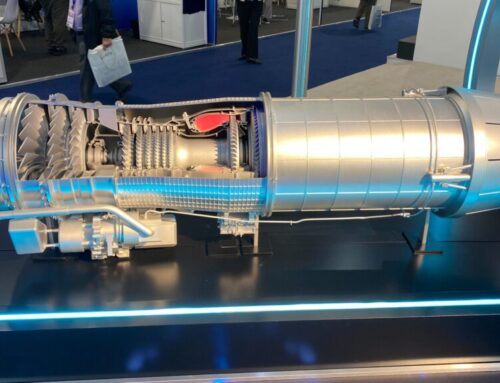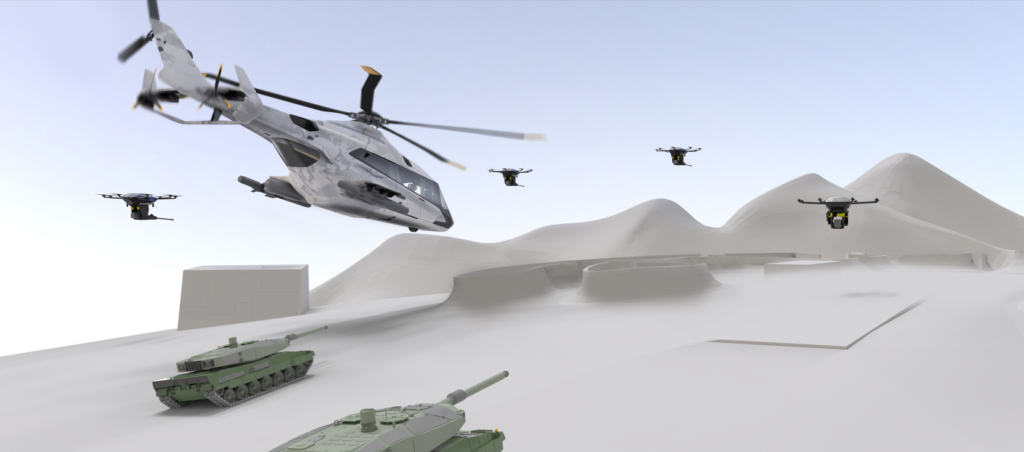Bell rendering of its X-plane design for DARPA’s SPRINT program. (Bell photo)
WASHINGTON — The Defense Advanced Research Projects Agency (DARPA) has selected competitors Aurora Flight Sciences and Bell Textron to move forward with designs for a new X-plane under the agency’s Speed and Runway Independent Technologies (SPRINT) program, axing competitors Northrop Grumman and Piasecki Aircraft Corp., according to a DARPA spokesperson.
“The SPRINT program entered Phase 1 on November 1, 2023. As of May 2024, two performers — Aurora Flight Sciences and Bell Textron, Inc. — have been awarded contracts for Phase 1B. Performers have approximately one year to complete preliminary design work for their aircraft,” the spokesperson said.
In response to follow-up questions from Breaking Defense, the spokesperson said the Aurora and Bell awards are the only two planned for Phase 1B. Aurora is a Boeing subsidiary.
“Bell is honored to be selected for the next phase of this revolutionary program and ready to execute preliminary design,” Jason Hurst, executive vice president for engineering at Bell, said in a press release today. “We completed our initial risk reduction efforts with our sled test demonstration at Holloman Air Force Base, and we look forward to building on this success with our continued work with DARPA.”
According to Bell, the company’s pitch “showcas[ed] folding rotor, integrated propulsion, and flight control technologies,” at Holloman last year. The company has previously advertised its X-plane bid as an uncrewed system capable of sea-based missions.
Aurora revealed additional details about its uncrewed demonstrator design last week, which features “a low-drag, fan-in-wing demonstrator that integrates a blended wing body platform,” according to the company.
“Aurora and Boeing bring relevant expertise in blended-wing-body platforms, high-speed VTOL [vertical takeoff and landing] configurations, and military aircraft development,” Larry Wirsing, vice president of aircraft development at Aurora, said in a press release. “The DARPA SPRINT program is an exciting opportunity to continue our history of advancing technology demonstrator programs that enable new capabilities for the U.S. military.”
Northrop confirmed to Breaking Defense today that the company will not be moving forward for SPRINT. Piasecki did not immediately respond to a request for comment.
The SPRINT effort, which is jointly run by DARPA and US Special Operations Command, envisions an X-plane that can vertically take off and land, fly at speeds from 400 to 450 knots and “hover in austere environments from unprepared surfaces,” according to DARPA. DARPA has said it hopes to validate the underlying tech that could later be adapted into aircraft of various sizes and designs.
Whatever comes of the SPRINT program could take on even more importance following the Army’s decision to cancel the Future Attack Reconnaissance Helicopter program, leaving operators like special forces to rely on legacy platforms. High-speed VTOL technology could also play a critical role in the Indo-Pacific, where runways are few and far apart.






![The sights from the 2024 Farnborough Airshow [PHOTOS]](https://centurionpartnersgroup.com/wp-content/uploads/2024/07/IMG_8722-scaled-e1721930652747-1024x577-hZjwVb-500x383.jpeg)




